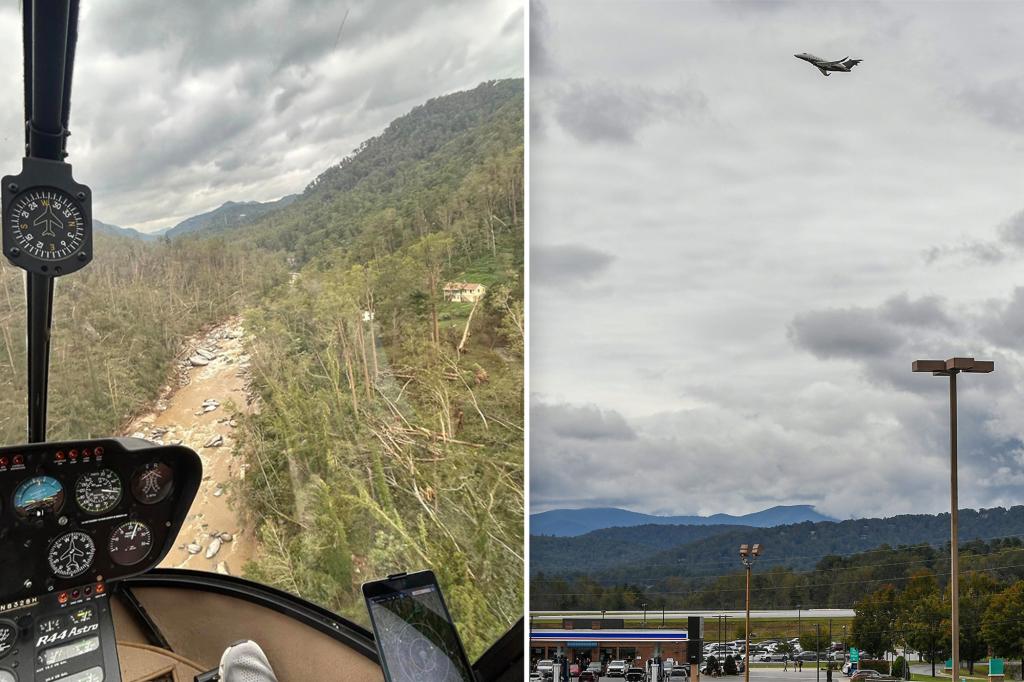More than two dozen mid-air close calls were reported in one day over western North Carolina as efforts to support local communities devastated by Hurricane Helene have surged in the state, according to federal authorities.
Approximately 30 mid-air close calls were reported in the Tar Heel State on Sept. 28 as federal officials noted a 300% spike in relief efforts caused the skies to be crowded with planes, helicopters and drones since the catastrophic storm cleared, CBS reported.
The region has since received an outpouring of support from government, search and rescue flights, as well as the National Guard, Becca Gallas, director of the North Carolina Department of Transportation Division of Aviation, told the outlet.
Despite efforts to get supplies on the ground, she said safety issues with air operations caused the Federal Aviation Administration and NCDOT to enact new regulations to reduce the risk of any mid-air collisions, especially at smaller airports with limited resources.
“We want every single pilot and aircraft to go home safely at the end of the night when they are doing that critical operation,” Gallas said.
The FAA is requiring pilots and drone operators to obtain approval before using an airport facility or runway, CBS reported, adding the Prior Permission Required designation is currently in effect at the Asheville Regional Airport and Rutherford Airport, but could extend to others.
Other mitigation measures include establishing call-in lines at airports for incoming pilots to schedule landings and supply unloading’s; establishing sky corridors for civilian aircrafts to use that are separate from the lanes utilized by military search and rescue flights; and short-term targeted airspace restrictions in areas where multiple search and rescue aircraft are operating, according to the outlet.
While no commercial airlines were involved in the close-calls, Gallas cited other incidents of aircrafts suffering maintenance issues or catching fire while dropping off relief supplies, though no injuries were reported.
Two small airports in the area also ran out of fuel for a short period due to the increased air traffic, Gallas said, according to CBS.
One week since the storm, more than 100 people are still unaccounted for and are feared dead.
As of Friday, the death toll climbed to more than 200 across six states impacted by Helene, including 114 in North Carolina where the storm’s consequential flooding devastated entire communities, CBS reported.
Helene is now the deadliest storm in the US since Hurricane Katrina in 2005.
Experts say that Helene and other storms in the past week have dumped more than 40 trillion gallons of water in the region.
Victims of the storm continue to struggle to gain access to food, water, electricity, and cell phone service.
Read the full article here

